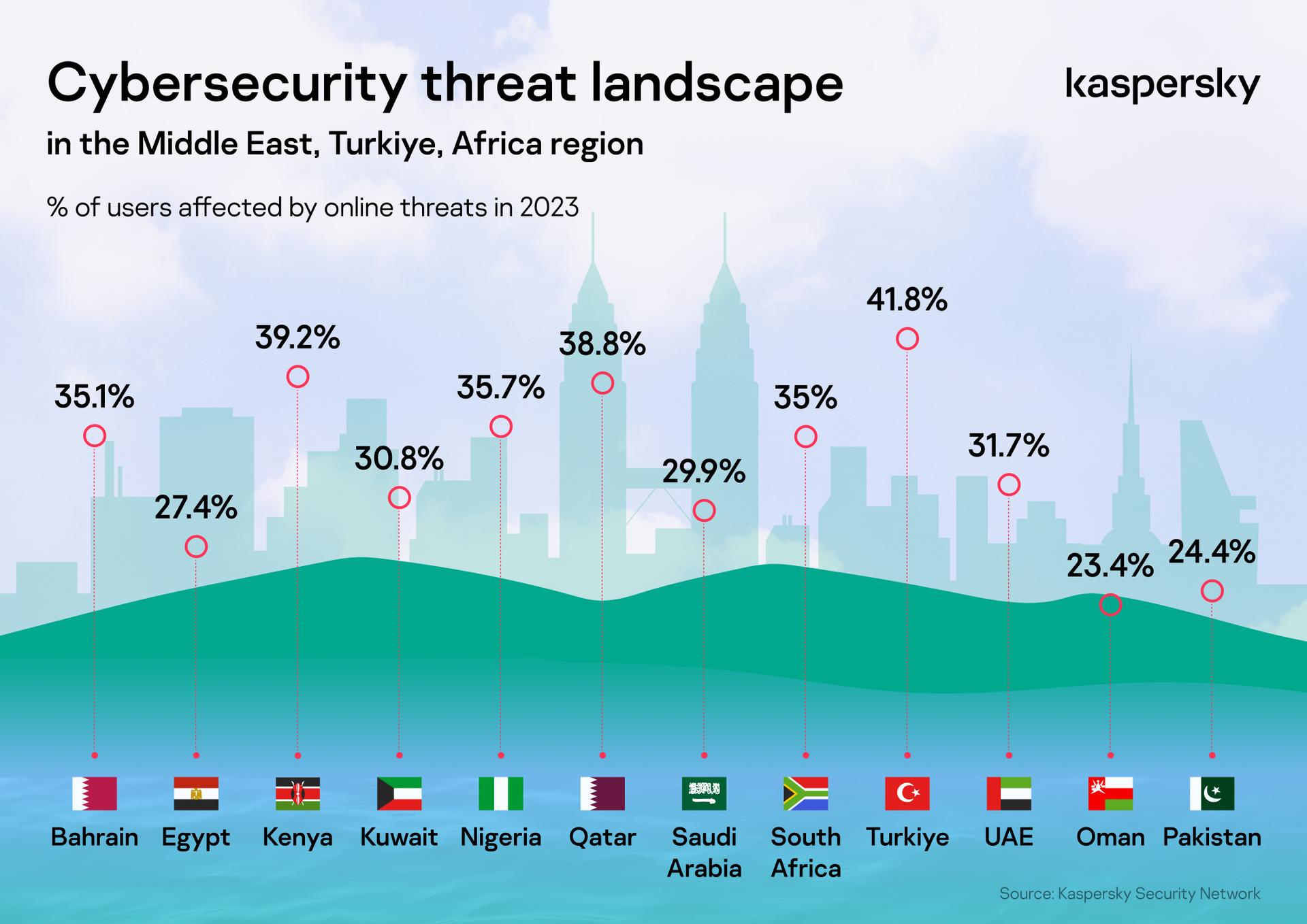Kaspersky experts discussed the evolution of the cyberthreat landscape in the region during its 9th annual Cyber Security Weekend – META 2024, held in Kuala Lumpur, Malaysia. The focal point of the discussions was the security of emerging technology trends such as AI, that are influencing the scale of modern threats. In parallel, threats targeting industrial control systems within critical infrastructure, in the Middle East, Africa, and Asia were also discussed. Kaspersky's Cyber Immunity approach took center stage as a way to create solutions that are virtually impossible to compromise and that minimize the number of potential vulnerabilities.
When looking at the threat landscape in the United Arab Emirates, Kaspersky’s telemetry showed that the number of overall cyberthreats in the country decreased by 20% in 2023 as compared to 2022. While attacks using social engineering tactics to scam people into revealing sensitive information, popularly known as phishing attacks increased by 70%. Dissecting the threat landscape in the United Arab Emirates further, between Q4 and Q3 of 2023, Kaspersky experts saw attacks using exploits that take advantage of a particular vulnerability in a system rise by 53%. Ransomware attacks designed to encrypt a victim’s data, files, or system, making them accessible in exchange for a payment, increased by 86% in the UAE. Spyware attacks which involve malicious software that infiltrates a user's computer to gather and share data with third parties rose by 44%. And backdoor attacks which allow users to bypass security and gain high-level access increase by 55%.
For Saudi Arabia Kaspersky’s telemetry showed the number of overall cyberthreats decreased by 19% in 2023 as compared to 2022. Dissecting the threat landscape in Saudi Arabia further, Kaspersky experts saw attacks using banking malware to collect online banking credentials and other sensitive information from infected machines rise by 51%. Ransomware attacks designed to encrypt a victim’s data, files, or system, making them accessible in exchange for a payment, increased by 74% in Saudi Arabia. While attacks using social engineering tactics to scam people into revealing sensitive information, popularly known as phishing attacks increased by 44%.
According to Kaspersky's analysis, online threats caused by vulnerabilities on web pages, in emails or webservices, have fluctuated significantly in the region. Turkiye saw the highest number of users affected by online threats (41.8%), followed by Kenya (39.2%), Qatar (38.8%) and South Africa (35%). Fewer users were affected in Oman (23.4%) and Egypt (27.4%) followed by Saudi Arabia (29.9%) and Kuwait (30.8%).
“As the cybersecurity landscape evolves, cyber threats continue to become diverse and sophisticated. This trend is particularly evident due to the emergence of advanced technologies like AI and the escalating geopolitical and economic turbulence within the META region. These factors collectively contribute to the surge in cybercrime and the heightened complexity of cyberattacks.”, comments Amin Hasbini, Director of META Research Center Global Research and Analysis Team (GReAT)





